Thymine and uracil are some of the pyrimidines that form part of nucleic acids. The nucleic acids possess nucleotides and the nucleotides contain nitrogenous bases. Uracil and thymine are the divisions of the nitrogenous bases. Although these components look almost similar in structure, there are unique features. In a nutshell, uracil is a component of RNA whereas thymine is a component of the DNA.
Definition of Uracil
As aforementioned, uracil is a pyrimidine component of the RNA. It pairs with the adenine through hydrogen bonds. The hetero cyclic aromatic structure of the uracil is characterized by the keto groups at carbon-2 and carbon 4. By attaching to ribose through the glycosidic bond, the uracil can form the uridine which is the nucleoside. The function of uridine is to serve as the allosteric regulators in animals and plants.
Uracil is classified as a weak acid. It can react with halogens and can absorb the ultraviolet light. The importance of uracil is to be used as an identity of the RNA. But the deamination of cytosine can turn it into uracil. This is the main reason why uracil is seldom used in the DNA because this deamination of cytosine to uracil can cause problems in the DNA. During cell division, it would not be easy to recognize the uracil as a result. For stability, reasons thymine is used in the DNA instead of uracil.
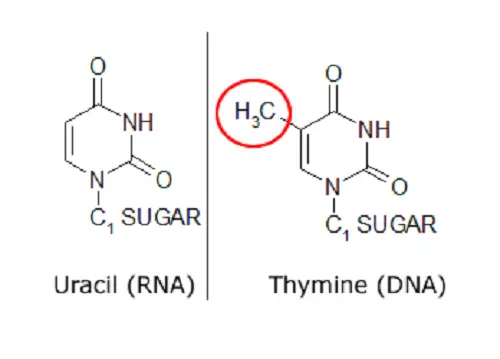
Definition of Thymine
Thymine is a pyrimidine component of the DNA. It enhances the stability of the DNA than uracil if it were part of the DNA. It is also paired with the adenine through the two hydrogen bonds. It is through the heterocyclic aromatic structure of thymine that the key difference between uracil and thymine is apparent. In actual sense, thymine was originally synthesized from the uracil. The main difference is seen from the addition of the methyl group at carbon-5. This has led to the alternative of thymine as the 5-methyluracil. Thymine forms deoxythymidine whose phosphorylation is phosphorylated into the mono, di and triphosphates.
Key Difference between Uracil and Thymine
Location
- Thymine is found in the DNA whereas the uracil in the RNA. Thymine is responsible for the stability of the DNA as the hub of genetic information for every organism. Uracil, on the other hand, would render the DNA unstable had it been a component of the DNA because of the deamination of cytosine into uracil. The only difference between the uracil and the cytosine is the NH2 and the O groups
Structure
- The structures are similar with the exception of the methyl group (CH3) at carbon-5 in thymine heterocyclic structure, whereas in uracil is only the hydrogen attached at carbon-5.
Molecular Formula
- Molecular formula of thymine is C5H6N2O2 and that of uracil is C4H4N2O2.
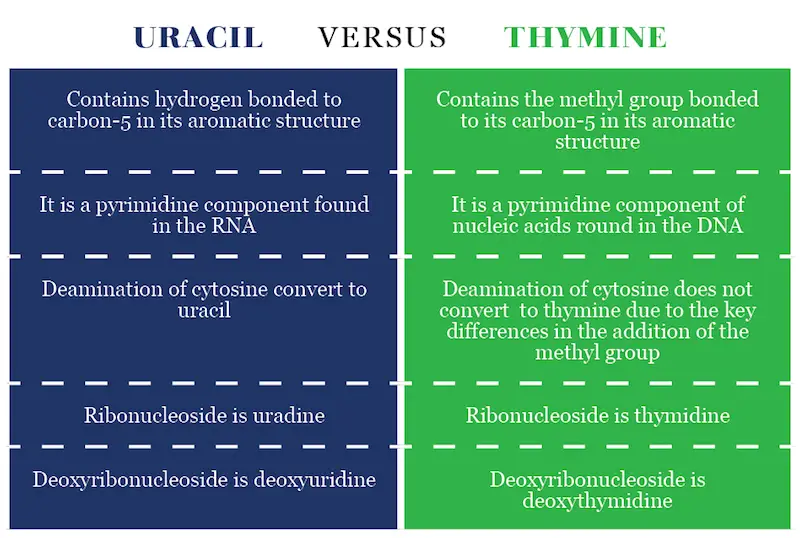
Summary
- Thymine is a pyrimidine component found in the DNA whereas the uracil is found in the RNA
- Thymine is synthesized from the uracil by adding the methyl group at carbon-5
- The major difference between uracil and the thymine is the methyl group in thymine
- Ribonucleoside of uracil is uradine and that of the Ribonucleoside is the thymidine
- Deoxyribonucleoside of the uracil is deoxyuridine and that of the thymine is deoxythymidine
- They both pair with adenine through the two hydrogen bonds
- Thymine is more stable than the uracil,; that’s why is used in the DNA
Author: Lusi Madisha
Lusi is a professional writer and a researcher for more than seven years. She is a chemical engineering graduate from the University of South Africa.

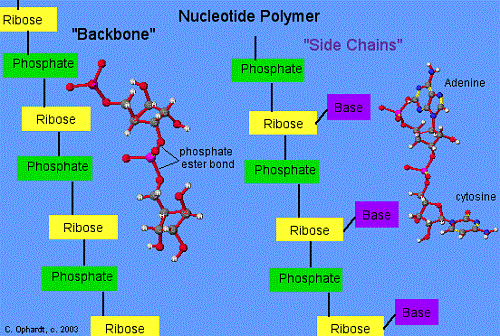
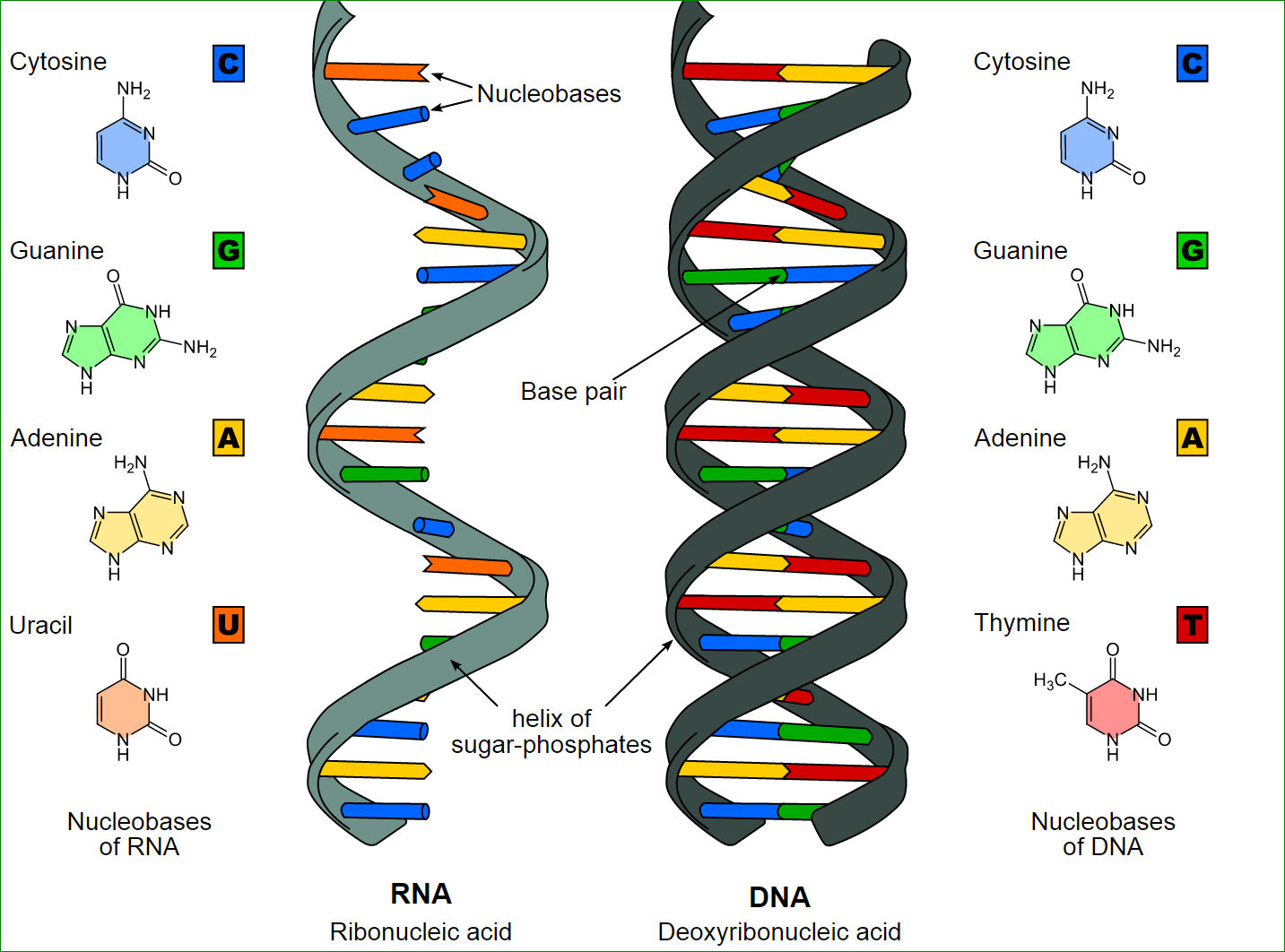
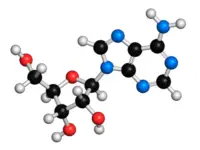








Leave a Reply